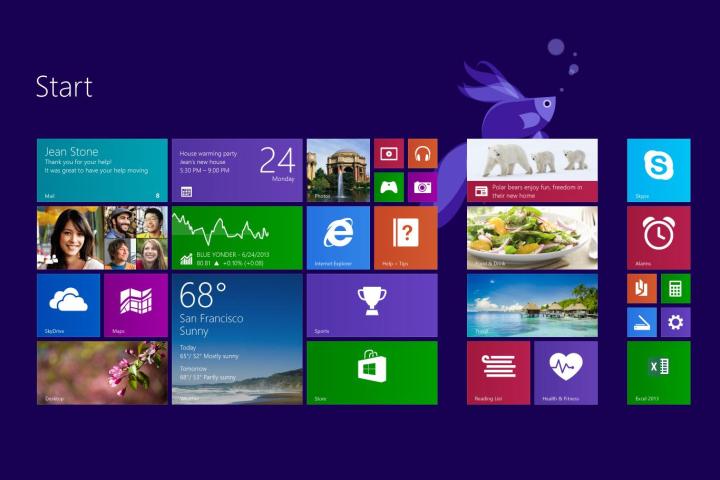
Everyone knows that Windows 8 and Windows 8.1 have one big problem on top of a bunch of a smaller, though not necessarily small, issues.
Namely, it’s unpopular. Very unpopular.
In fact, Windows 8 and 8.1 are so unpopular that, as of January, Net Marketshare, which tracks operating system usage statistics, pegs the combined market share of both Windows 8 and Windows 8.1 at just over 10.5 percent, well below Windows XP’s share of 29.3 percent, and in a completely different zipcode when compared with Windows 7’s share of 47.46 percent.
To combat this issue, Microsoft has employed a few tactics, including halting support for Windows XP in a little over a month from now. However, if this report is any indication, Microsoft may try something pretty drastic in order to boost Windows 8 and 8.1’s popularity; making it entirely free.
Wzor.net, a Russian site that has previously leaked screenshots of what were alleged to be the incoming update for Windows 8.1, recently leaked shots of something that appears to call itself “Windows 8.1 with Bing.”

Assuming this screenshot is legitimate, this could represent an effort on Microsoft’s part to experiment with different monetization models for Windows 8.1, says ZDNet’s Mary Jo Foley. This perhaps could at some point lead to Microsoft offering the polarizing OS for free. Considering that Apple made Mac OS X Mavericks free for (most) Mac users, the cheap prices of notebooks running Google’s Chrome OS, and Windows 8.1’s intense unpopularity, this could be a move that Microsoft might have to make.
On the other hand, this begs the question: if people who are clinging to Windows XP and Windows 7 are resisting to update to Windows 8 and/or 8.1 so strongly now, will they want to give up on those operating systems even if Windows 8.1 was made completely free of charge? I have my doubts.
While some of those people are undoubtedly balking at the $100 price tag for Windows 8/8.1 only 4+ years after the release of Windows 7, if it was an OS that was well-liked and considered by most to be enjoyable to use, we’re willing to bet that many of those people would be willing to make the plunge and put down a benjamin to upgrade. This can’t be made more apparent than with the case of the “Facebook Phone,” which was initially priced at $99, dropped to 99 cents roughly one month after launch, and was still a massive failure after the price dropped to roughly what a can of coke costs here on the streets of NYC.
The moral of the story: people don’t want things they don’t like, and most PC users don’t like Windows 8/8.1, if market share numbers are any indication. That likely wouldn’t change even if Microsoft offered the OS for nothing.
What do you think? Sound off in the comments below.
Editors' Recommendations
- Windows 11 tips and tricks: 8 hidden settings you need to try
- How to automate tasks in Windows to make everything faster
- How to back up Windows 11 and keep all your data safe
- How to install Android apps on Windows 11
- 7 beloved Windows apps that Microsoft has killed over the years


